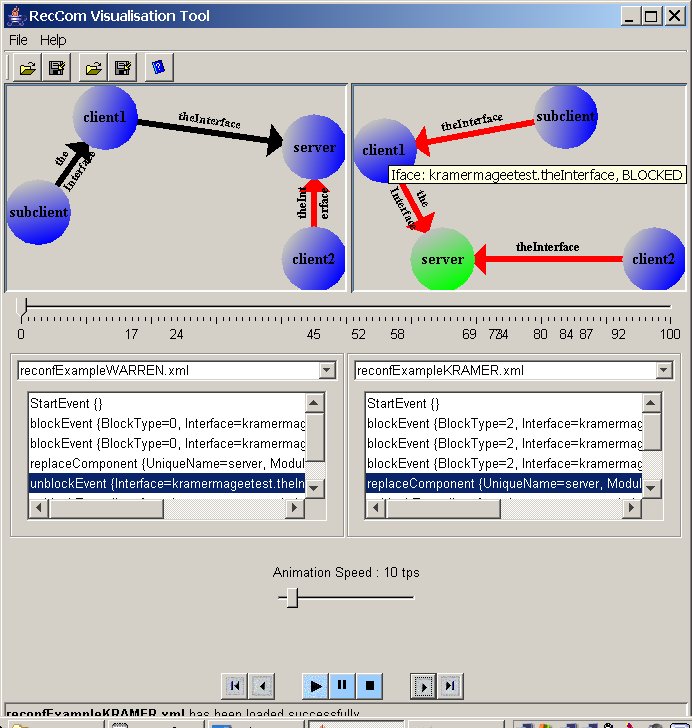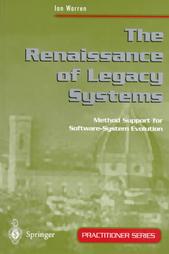![]()
 Dynamic
reconfiguration allows software systems to be changed without having to first
shutdown the system. Dynamic reconfigurations is an enabling technology for
systems that must run for extended periods of operation, such as many
Web-accessible business applications and mission critical software including
control software for the International Space Station. In addition, dynamic
reconfiguration contributes to the development of autonomic systems, which
reconfigure themselves with the aim of being self managing.
Dynamic
reconfiguration allows software systems to be changed without having to first
shutdown the system. Dynamic reconfigurations is an enabling technology for
systems that must run for extended periods of operation, such as many
Web-accessible business applications and mission critical software including
control software for the International Space Station. In addition, dynamic
reconfiguration contributes to the development of autonomic systems, which
reconfigure themselves with the aim of being self managing.
Recent work in the area of dynamic reconfiguration has been in conjunction with Jamie Hillman from the Computing department at Lancaster University, UK. This work has led to the OpenRec framework that allows developers to build reconfigurable systems and to experiment with different techniques for carrying out reconfiguration.
Publications of this work include:
An Open Framework for Dynamic Reconfiguration, presented at the International conference of Software Engineering in Edinburgh UK, 2004.
Quantitative Analysis of Dynamic Reconfiguration Algorithms, presented at the International Conference on Design, Analysis and Simulation of Distributed Systems in Virginia, USA, 2004.
Meta-Adaptation in Autonomic Systems, presented at the International Workshop on Future Trends in Distributed Computer Systems in Sozhou, China, 2004.
Legacy software systems pose a dilemma for many organizations. On the one hand, they are business-critical but on the other they incur prohibitive operating and maintenance costs. Completely replacing the system is expensive and is associated with the risk of losing business knowledge that is encapsulated by the system. But, continuing with the status quo means that the system remains expensive to maintain and may involve using obsolete software and hardware. Between these two extremes is reengineering which includes a range of possibilities, with differing costs and risks, for dealing with a legacy system.
 The
European ESPRIT project
Renaissance
involved a consortium of industry and academic organizations which developed a
method for managing evolution of legacy systems. In particular the method
offers advice on what to do with a legacy system given technical
technical, economic and business factors; and based on the decision taken, the
method provides guidance on how to carry out the evolution strategy.
The
European ESPRIT project
Renaissance
involved a consortium of industry and academic organizations which developed a
method for managing evolution of legacy systems. In particular the method
offers advice on what to do with a legacy system given technical
technical, economic and business factors; and based on the decision taken, the
method provides guidance on how to carry out the evolution strategy.
Work from the Renaissance project has been published at European and International conferences and in the text, The Renaissance of Legacy Systems.